JavaScript Series
Patterns and Techniques of Modern Web Applications

Presented July 17, 2012
What are we here to discuss?
- Model-View-Controller (MVC)
- The evolution of the ViewModel (MVVM)
- Publish/Subscribe Pattern
- Templating
- Understanding Application State
- Test Driven Development
Presented By...
Aaron Greenlee
aarongreenlee.com
| @aarongreenlee

Director of Development
WRECKINGBALL Media

James Brown
ja.mesbrown.com
| @ibjhb

Director of Technology
WRECKINGBALL Media

Sponsored By...
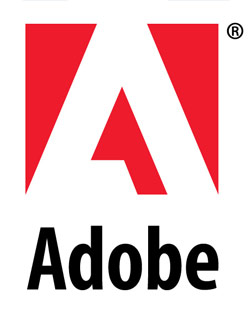
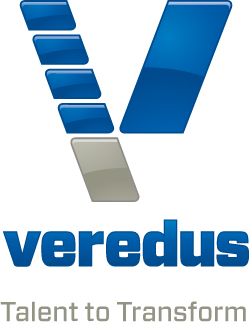

Central Florida Web Developers User Group
- 403 Members
- This is our 38th Meeting
- Founded June 2009

Our Mission
The Central Florida Web Developers User Group’s mission is the professional and personal development of our members through presentations, discussions and exercises that advance technical skills, use best practices, teach methodologies and attract opportunities to our members.
Let's GO!
Model-View-Controller
By Aaron Greenlee
The Problem?
How do you modularize the user interface functionality of a Web application so that you can easily modify the individual parts?
The same data needs to be shown in different ways!



A Solution?
Separate the modeling of the domain, presentation and actions into three separate classes.- Microsoft

What is a Model?

- Represents knowledge.
- A modeling of something from the real-world.
- Can be simple or complex.
- Can have knowledge of other models.
What is a View?

- A visual representation of knowledge.
- Manages the display of information.
- Highly customized for an implementation.
- Can have it's own knowledge (private) to manage itself.
What is a Controller?

- Manages inputs and communicates to Models and/or Views.
- Links a User to the system.
- Links other systems to the system.
- Manages workflow.
A Tip When Coding
Code Size Guideline

Come on! Write this one down!
We all love Mario... but what is Mario?

Is he a View?
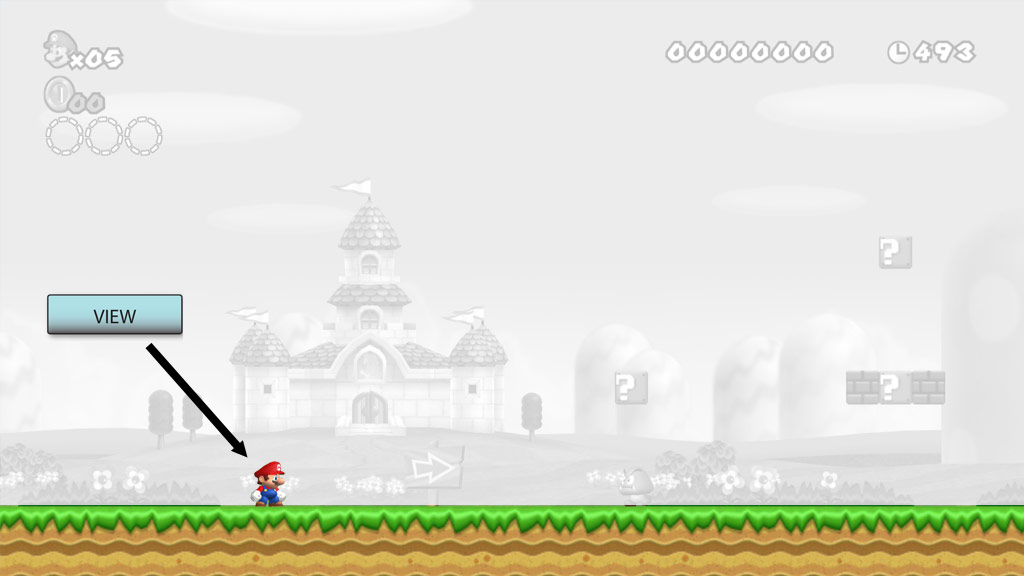
Or, is he a Model?
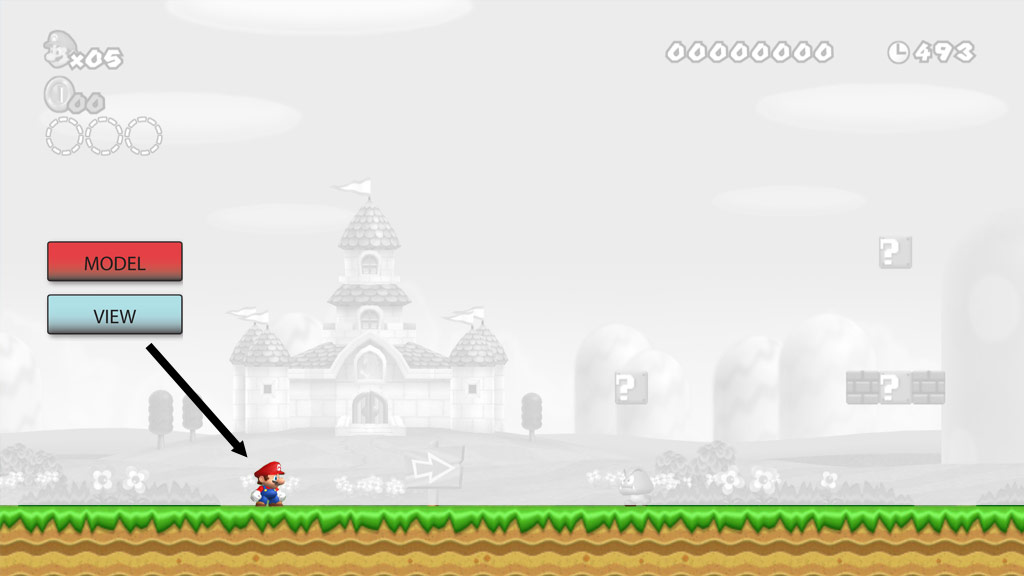
Mario can be a view and a model!
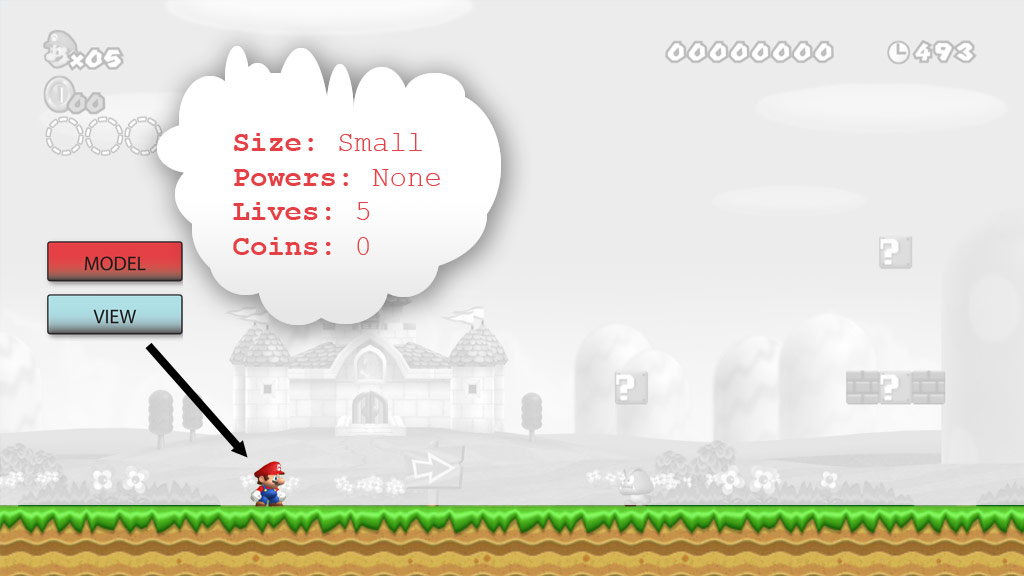
Powered by a Controller!
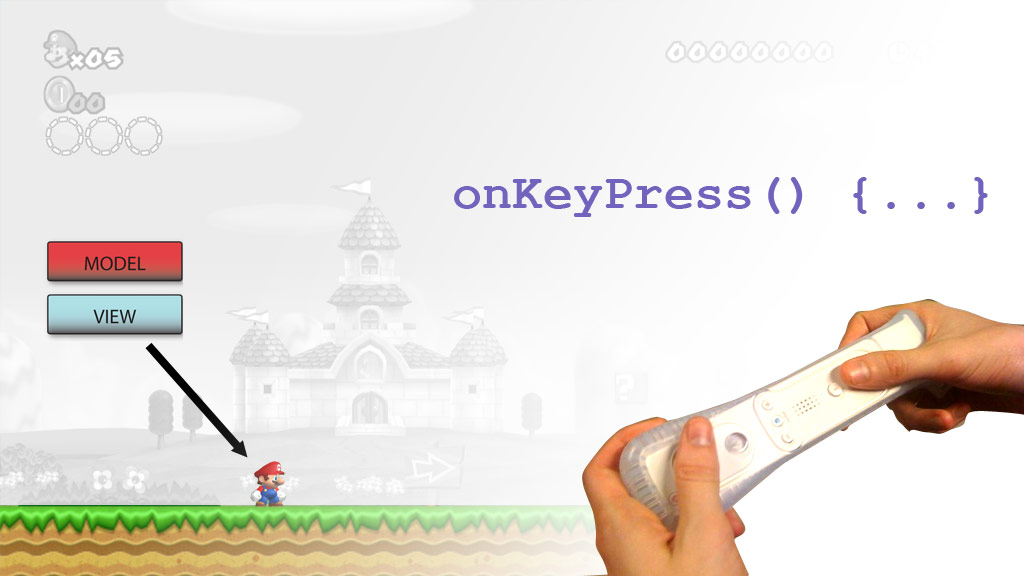
Are you starting to see the MVC "pattern"?
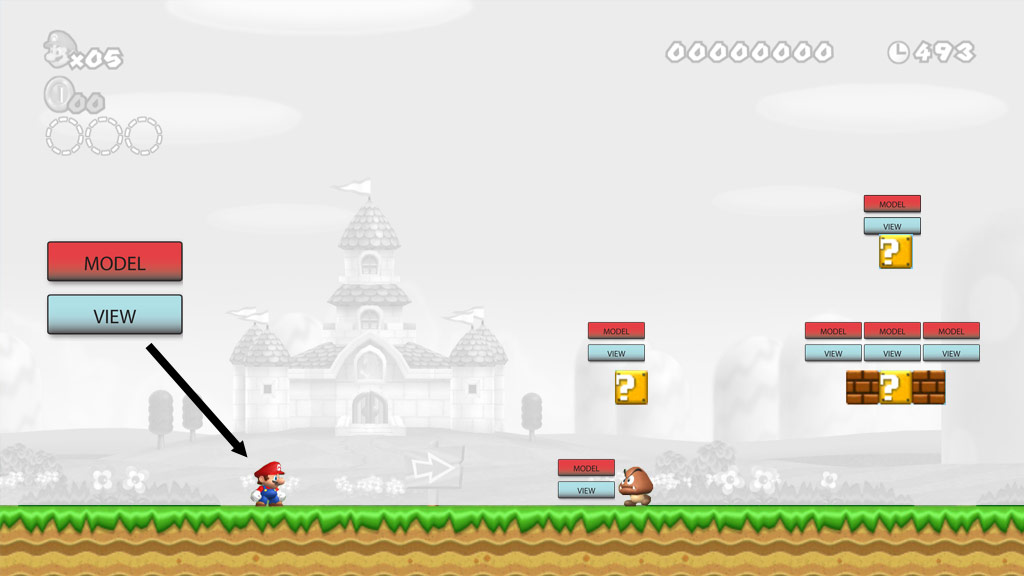
But, things evolve!

Introducing Model-View-ViewModel (MVVM)
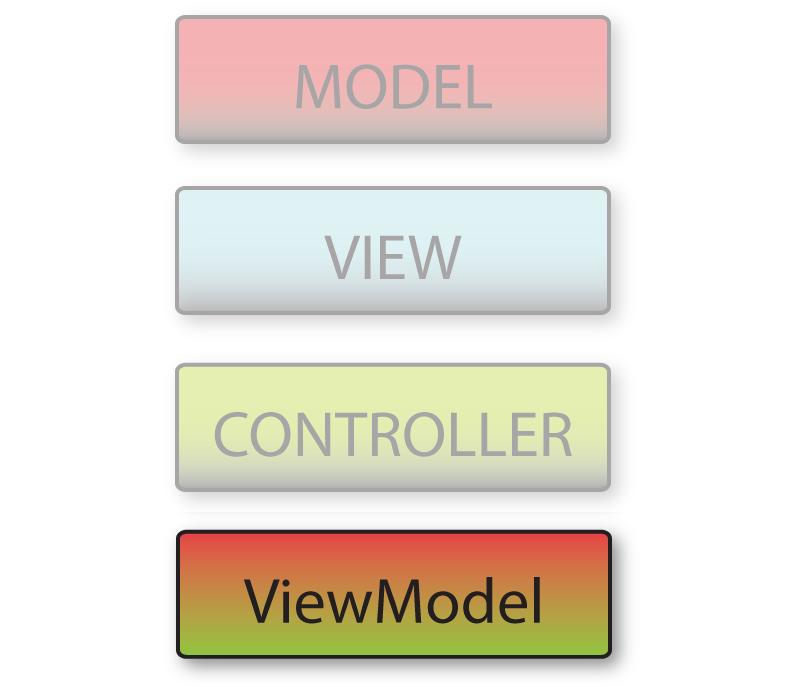

- Hybrid that blends the Controller and View.
- Helps reduce "Code Sprawl" and improve legibility.
- Perfect choice for JavaScript applications.
- MVC + MVVM = OK!
Where does MVVM make sense?
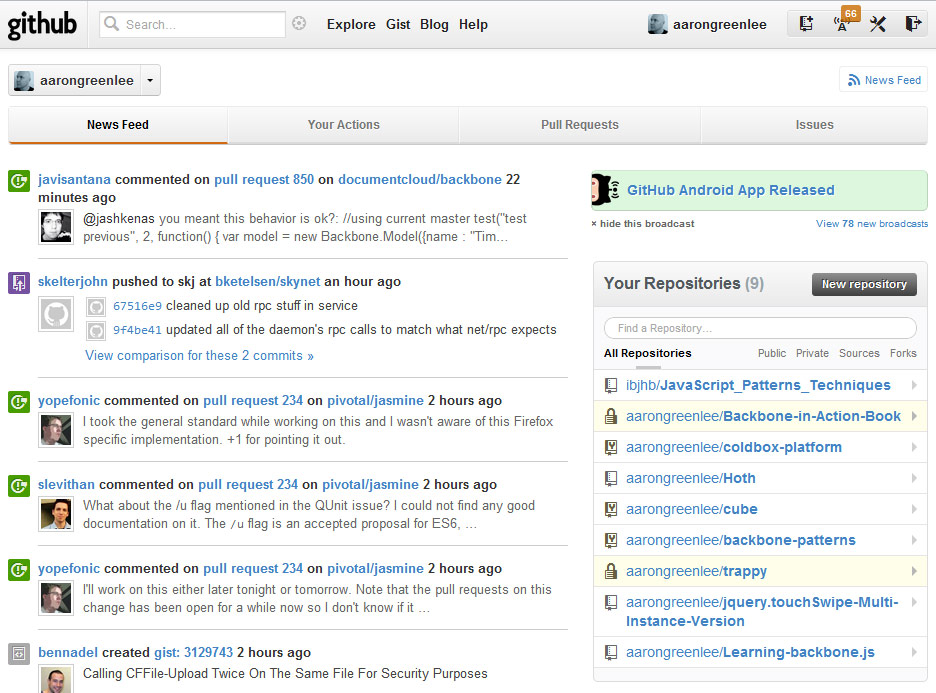
Breaking GitHub down into views...

Breaking GitHub down into views...
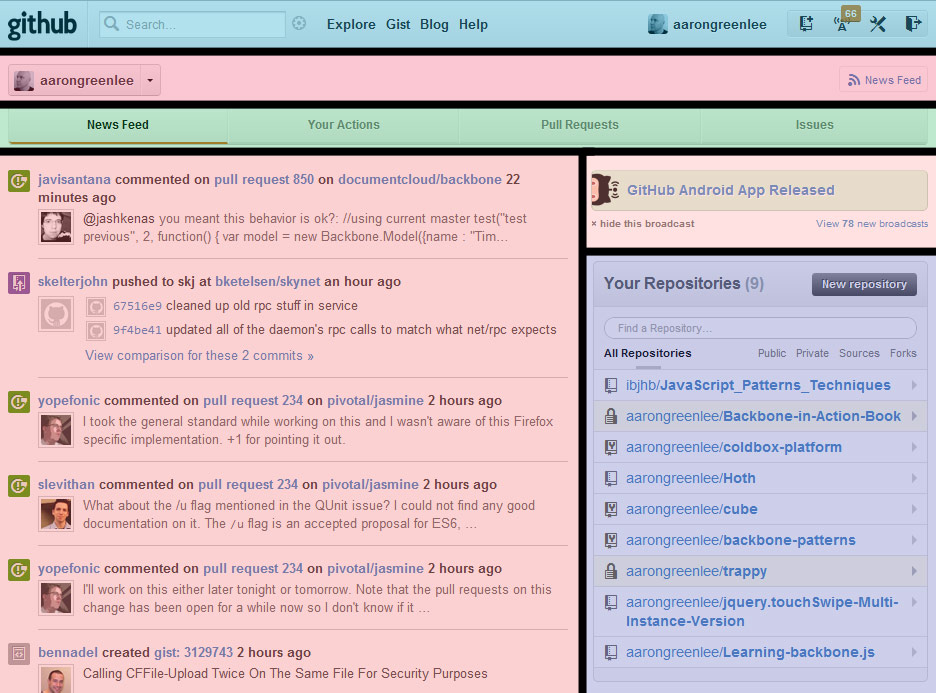
Backbone.js Uses the ViewModel Pattern!
(function($){
var ListView = Backbone.View.extend({
el: $('body')
// `events`: Where DOM events are bound to View methods. Backbone doesn't have a
// separate controller to handle such bindings; it all happens in a View.
,events: {
'click button#add': 'addItem'
}
,initialize: function() {
_.bindAll(this, 'render', 'addItem');
this.counter = 0;
this.render();
}
// `render()` now introduces a button to add a new list item.
,render: function() {
$(this.el).append("<button id='add'>Add list item</button>");
$(this.el).append("<ul></ul>");
}
// `addItem()`: Custom function called via `click` event above.
,addItem: function() {
this.counter++;
$('ul', this.el).append("<li>hello world"+this.counter+"</li>");
}
});
var listView = new ListView();
})(jQuery);Are you starting to see the MVVM pattern?

Application State
By Aaron Greenlee
What is Application State?
Application state is a means of creating variables that can be seen by all users.
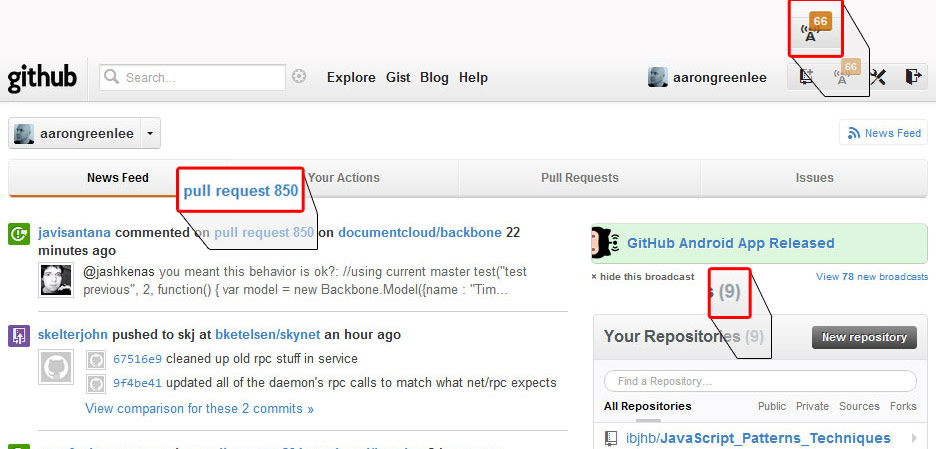
What is Application State?
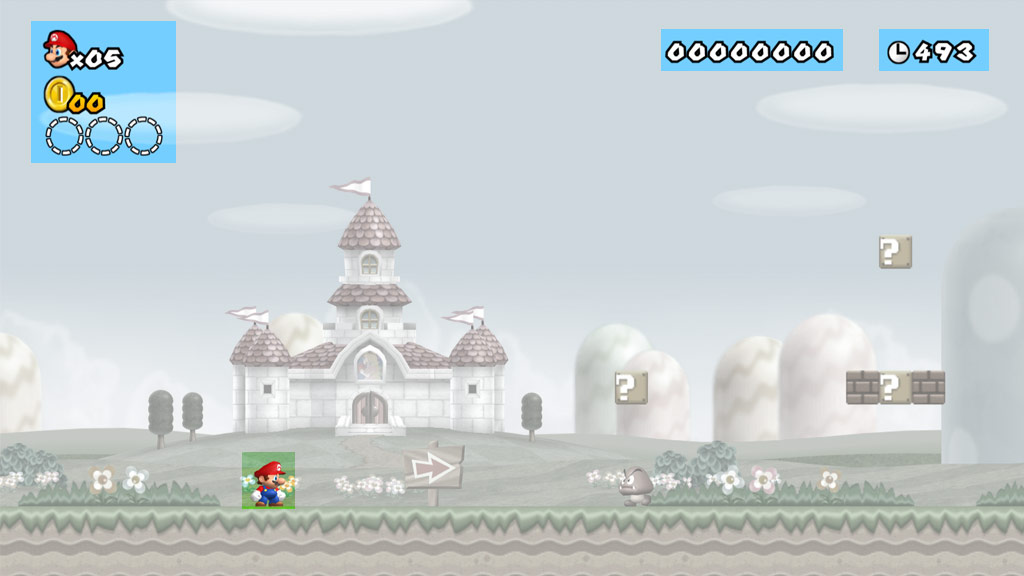
What is Application State?
- The Web is Stateless!
- You access "resources" at a given time.
- You may need to maintain state.

Maintaining State on the Web
- Set cookies to maintain user session.
- Transmit custom headers/tokens to maintain state.
- Use Websockets to publish state messages to clients.
- Storing values in global scopes (Memory).
- Storing values in databases (Slow).
Thiking About State
Publish / Subscribe
(aka Pub/Sub)
By James Brown
What is Pub/Sub?
Sometimes called the Observer pattern.
Loose coupling between objects.

Also called decoupling
Reduces dependencies between objects.
Instead of object 1 calling a specific function on object 2, object 2 would instead 'listen' (or subscribe) for an 'announcement' (or publish).
Why don't things break?
If an announcement is made and no one is listening, nothing happens (i.e. things don't break)
Likewise, if an object is listening and there aren't any announcements, nothing happens.
Benefits?
Why the heck worry about using it?

Decoupling
(obviously)
Publisher doesn't need to know who is subscribing
Better code re-use
Multiple subscribers
Many subscribers can listen to one publisher
Example time!!
Easier to TDD & Unit Test
More later...
High availability
(Message queues)
Example: Amazon SQS
Allows publishers to send messages and when subscribers are ready, they can read the message
Simple example: Image resize service
Amazon SQS Example

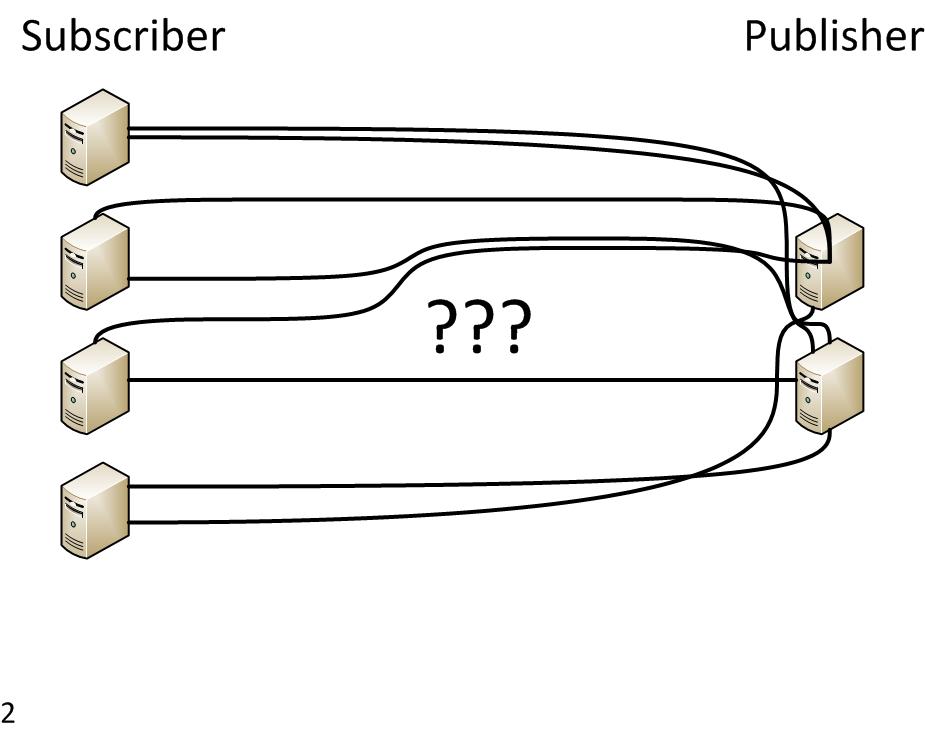
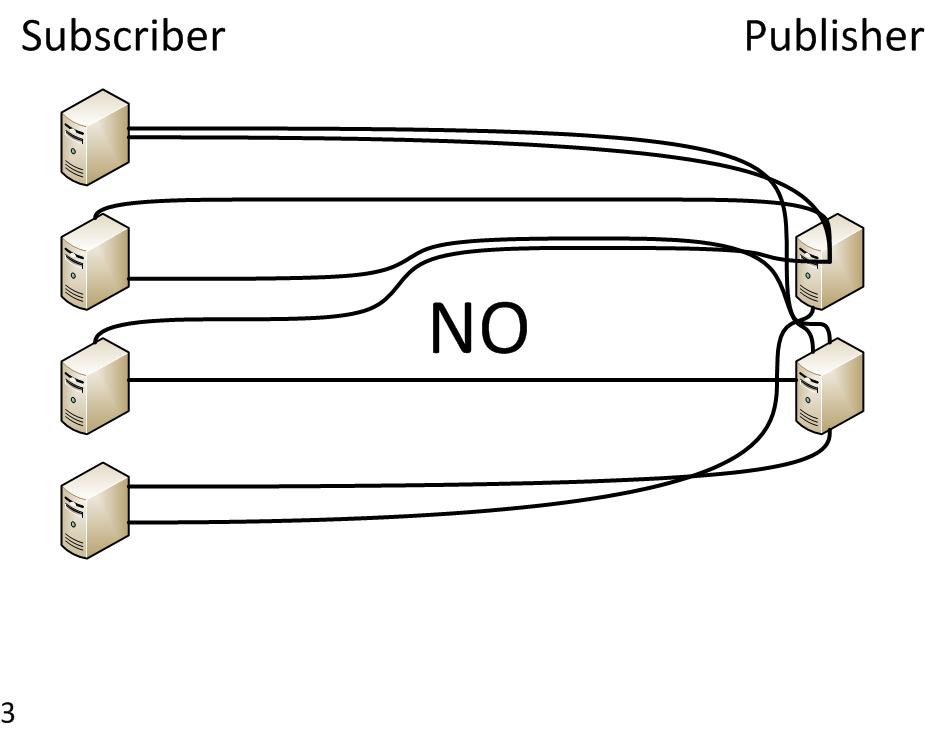
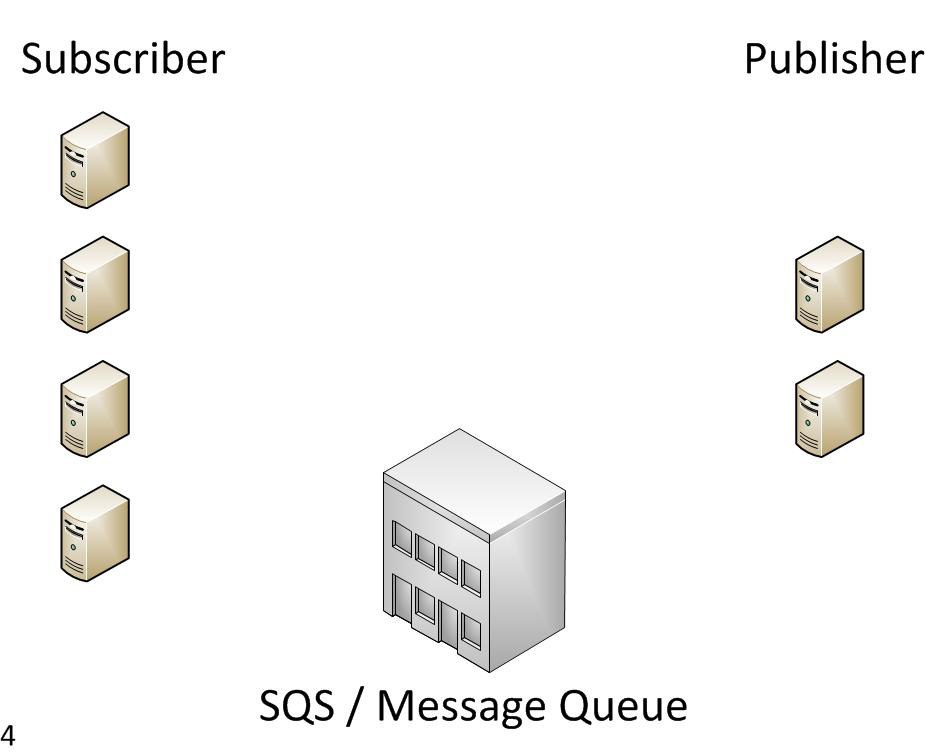
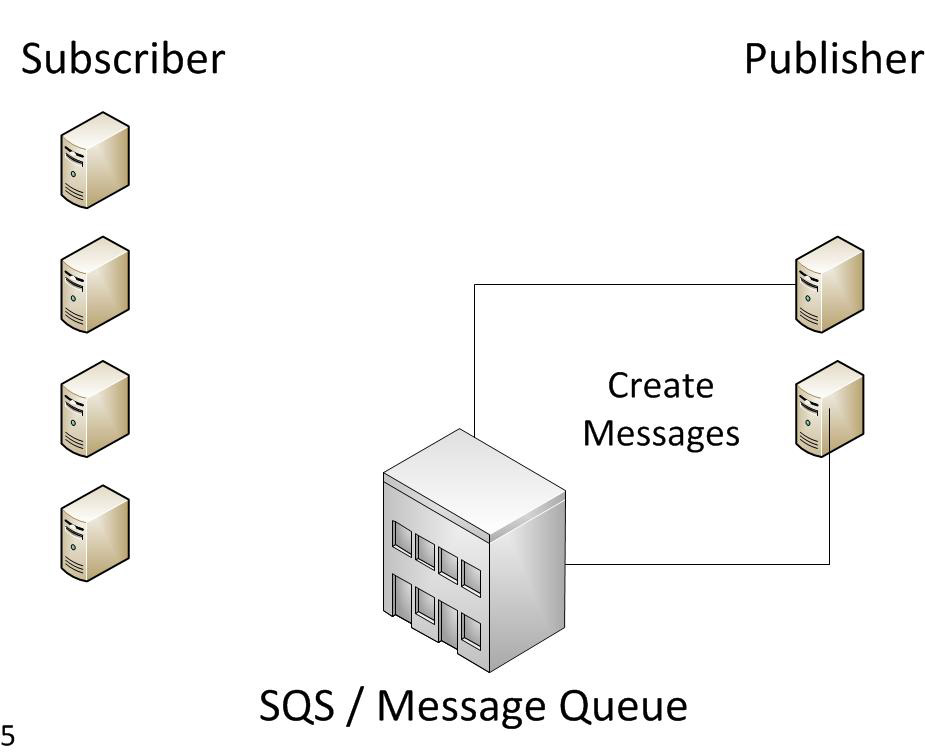
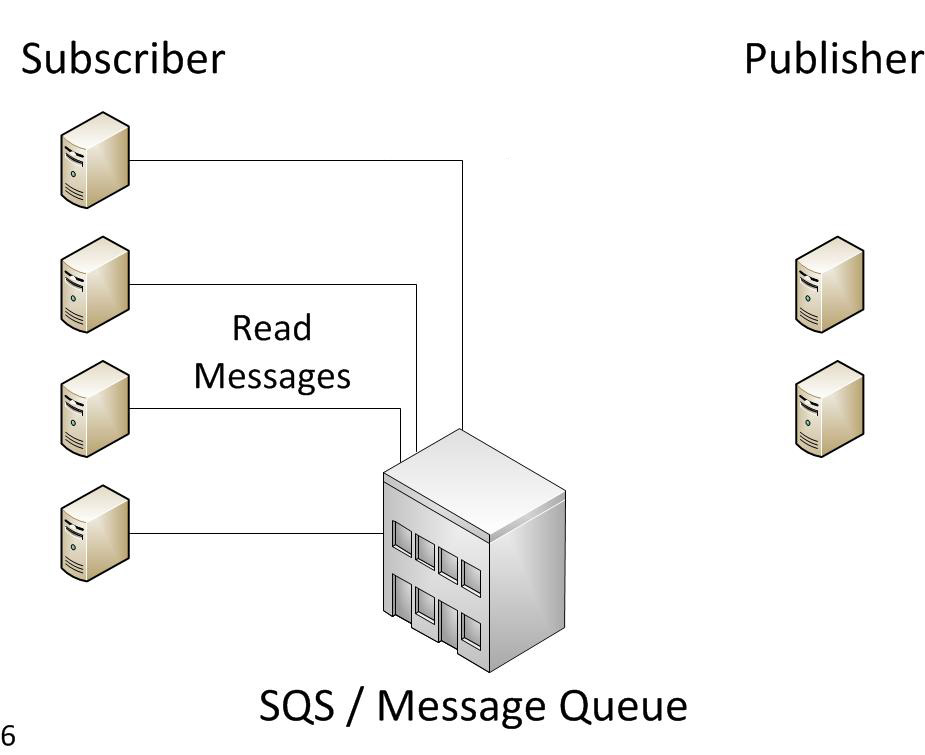
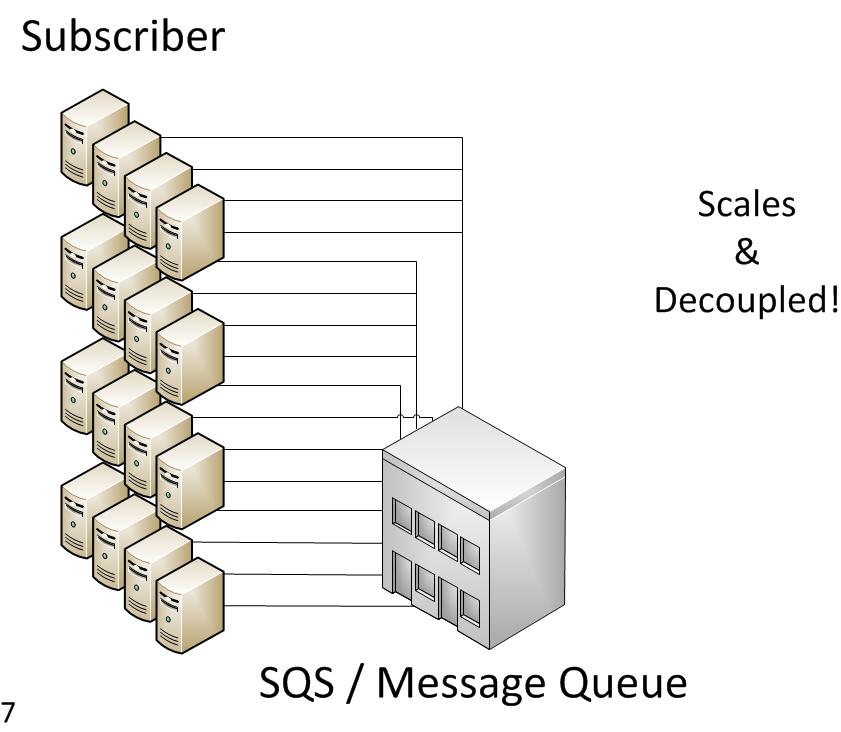
We'll review more Pub/Sub after we learn about templating
JavaScript Templating
By James Brown
Think Microsoft Word Mail Merge
(but much less painful)

String Replacement
(Very Basically)
- Mustache.js
- Allows (requires) templates to be logic-less
- This is good because it keeps a separation of concerns
- This could be bad because it can be a pain
- Allows for both server & client templates to be re-used
String Replacement++
(More Advanced)
- Handlebars.js, Underscore.js & tons of others
- Allows templates to be advanced with logic
- Provides if/then/else, looping, helper functions and full JavaScript
- This could be bad because code can get muddy quickly
- Also could bad because of lack of server-side libraries
TDD
By James Brown
Test Driven Development
Unit testing is about testing the smallest unit of functionality possible

Tests are written first!
Test are run first and failed
(Just do it)
Write your production code
Sometimes called a spec or SUT
Run Tests again
Yay!
Refactor, if possible
Re-run your tests to ensure things didn't break
Why TDD / Unit Test?
- So you don't break your own sh*#!%
- So you don't break other dev sh*#!%
- Immediate feedback and gratification
-
Extremely fast iteration process
(which keeps you off Twitter) -
Parallel Development
(spys, stubs, mocks) -
Cover every code path
(if/then/else, switch statements, error handling) -
Prove bugs exist that other developers wrote
(your code is perfect, right?)
Disadvantages of TDD?
None!
(Just kidding)Disadvantages of TDD?
-
Claims of slower development
(Typically TDD is actually faster over time) -
Requires applications to be planned out more
(Is this really bad???) -
Requires discipline
(Developers are lazy) -
People don't run unit tests
(Developers are really lazy! - Solved by CI) -
UI can be difficult to test
-
Too trusting of tests
How do we test JavaScript?

Use a test suite
Jasmine, QUnit, YUI, Hiro, Mocha
(Start with QUnit if unsure)
Use Spies, Stubs and Mocks
Sinon.js is great
Example time!
